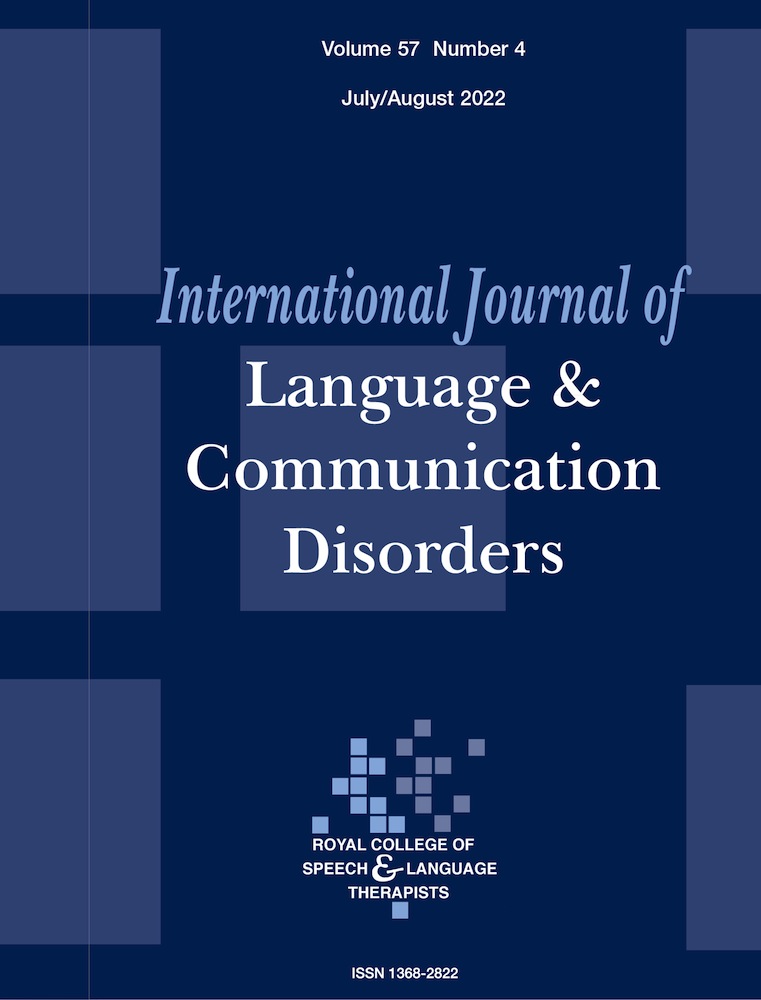Masking care: A qualitative investigation of the impact of face masks on the experience of stroke rehabilitation from the perspective of staff and service users with communication difficulties
Abstract
Background
Face mask use has become widespread as a means of reducing transmission of severe acute respiratory syndrome coronavirus 2 (SARS-CoV-2). Research suggests face coverings can impact speech discrimination, therapeutic alliance and the interpretation of non-verbal cues. However, there is little research into the impact of face masks on people with communication difficulties (pwCD) post-stroke.
Aims
To explore the perspectives of service users and staff on a stroke rehabilitation unit in order to understand the impact of staff wearing face masks on the experience of rehabilitation for pwCD. Strategies that might improve the experience of rehabilitation for pwCD were also explored.
Methods & Procedures
Semi-structured interviews and a focus group were conducted with six pwCD and five health professionals (HPs) on a stroke rehabilitation unit. The data were analysed using reflexive thematic analysis.
Outcomes & Results
Four main interacting themes were identified from the data: (1) face masks as a barrier to effective communication; (2) face masks as a barrier to human connection and therapeutic relationships; (3) the impact of face masks on an individual is influenced by multiple internal and external factors; and (4) there is a need for service provision to evolve to meet pwCD's needs when using face masks.
Conclusions & Implications
Findings shed light on how face masks can act as a barrier for pwCD within the rehabilitative process, and emphasize that each individual with communication difficulties is likely to be affected to a differing extent, as a result of multiple interacting factors. HPs are encouraged to consider the individual holistically, tailor strategies and adapt to each individual's needs. Further research is required to understand how to optimize rehabilitation outcomes when face masks are used.
WHAT THIS PAPER ADDS
What is already known on the subject
There is evidence face masks can affect speech discrimination, therapeutic alliance and interpretation of non-verbal cues. The existing literature predominantly considers people with hearing impairments, mental health needs or the general public. The potential for face masks to impact pwCD post-stroke is high, given pre-existing communication barriers and evidence of increased social isolation.
What this paper adds to existing knowledge
This study is the first of its kind to explore how face mask use by HPs impacts the experience of rehabilitation for pwCD post-stroke. The authors consider the need to tailor compensatory strategies to each individual and adapt them to meet service users’ needs.
What are the potential or actual clinical implications of this work?
HPs should monitor closely the impact of face mask use on pwCD with whom they are working, and consider what adaptations to delivery are required. It would be helpful for clinicians to have a discussion with pwCD post-stroke to understand the impact of face mask use on them personally and what strategies they would find most helpful within rehabilitation. Additional training by speech and language therapists on supporting effective communication and successful interaction with pwCD may be indicated in the context of face mask use.
CONFLICT OF INTEREST
The authors report no conflict of interest.
Open Research
DATA AVAILABILITY STATEMENT
Anonymized data supporting the findings of this study are available from the corresponding author within one year of publication upon reasonable request.




